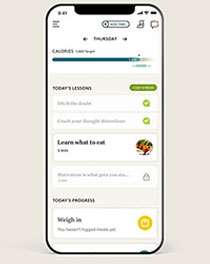By clicking on the product links in this article, we may receive a commission fee at no cost to you, the reader. Sponsorships and affiliate commissions help support our research so we can help you find the best products. Read our full affiliate disclosure here.
Wouldn't it be great if every runner were at his or her ideal weight? We'd all look and feel better, and race faster.
Being at your healthy, ideal weight would certainly make you a faster runner. In fact, a study completed in 2007 found that for every percentage increase in body mass, it cost study participants an extra 1.4 percent in metabolic energy to propel themselves forward. Of course, that's not a direct comparison for runners since they weren't running a race, time trial or other maximum effort.
But imagine how much better you'd feel training for a marathon if you could conserve 1.4 percent (or more) energy? You'd be able to use that energy in the final miles instead of hitting the infamous wall.
If one of your goals is to lose weight through running, here are three of the best ways to structure your training to burn fat and lose weight.
Losing weight faster requires healthy eating habits. Re-train your brain with NOOM:



